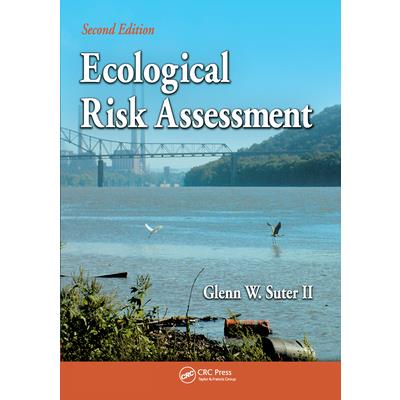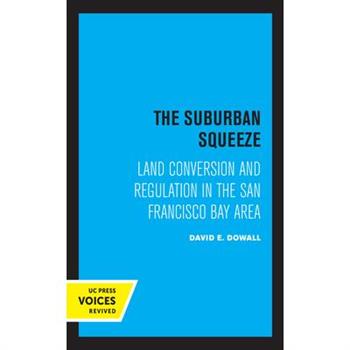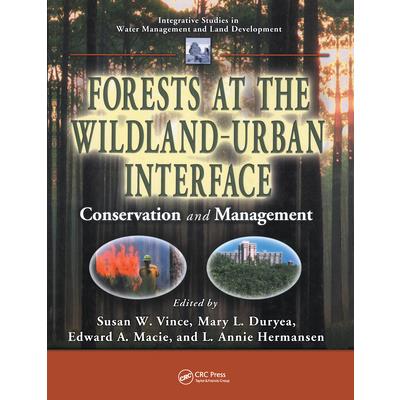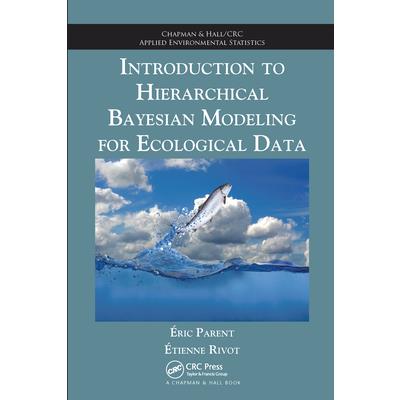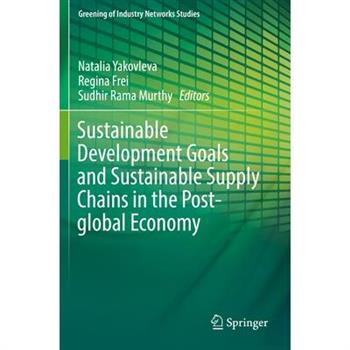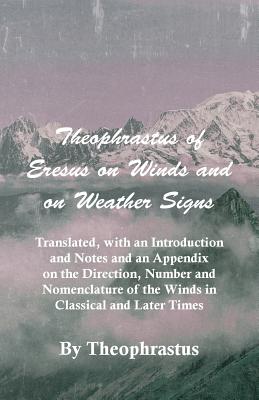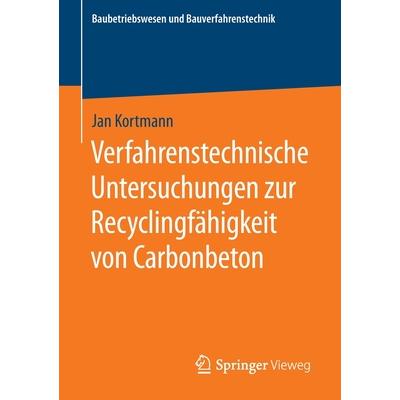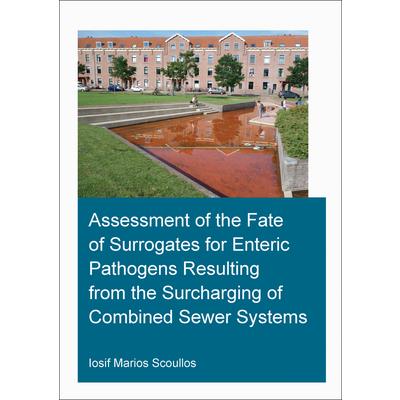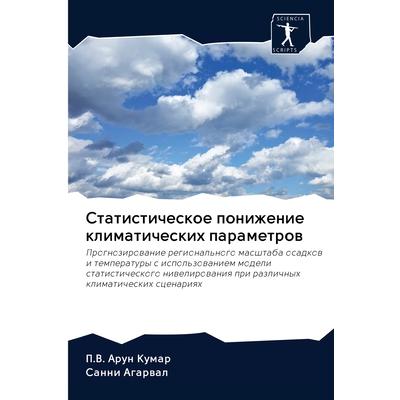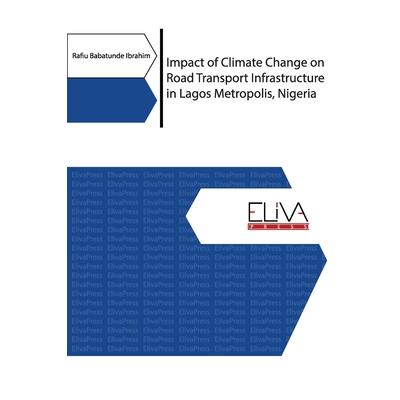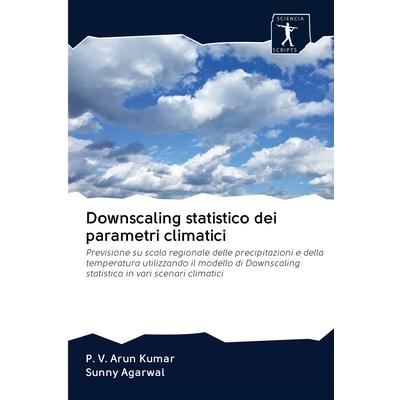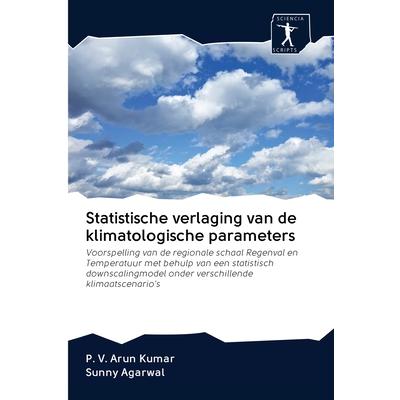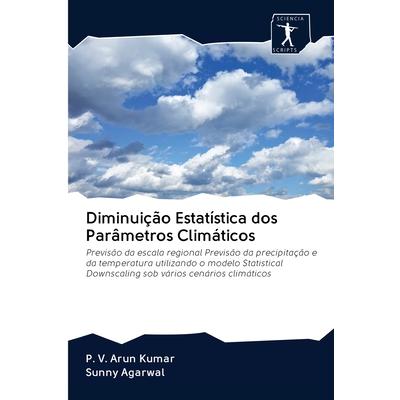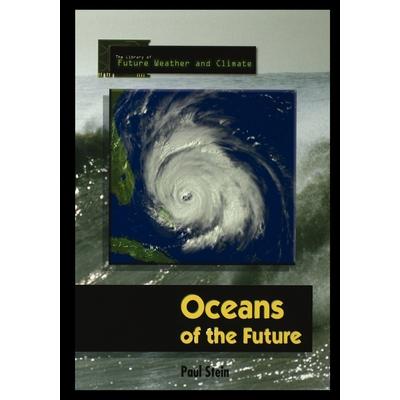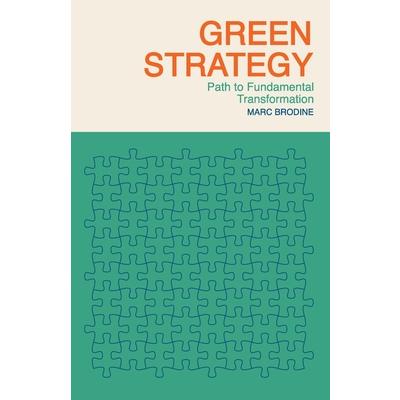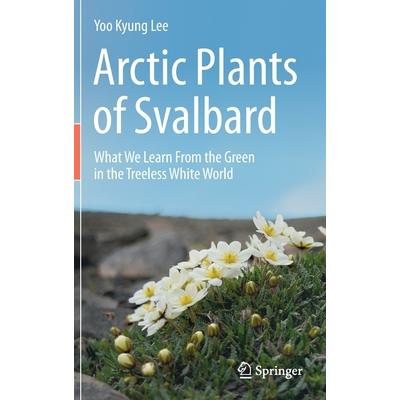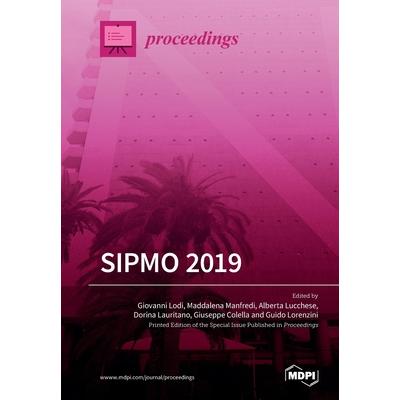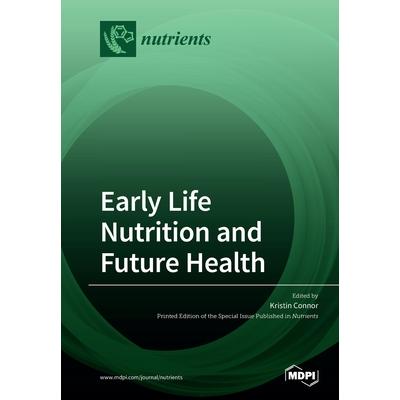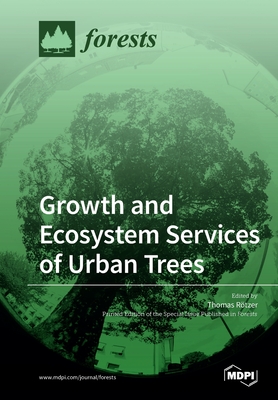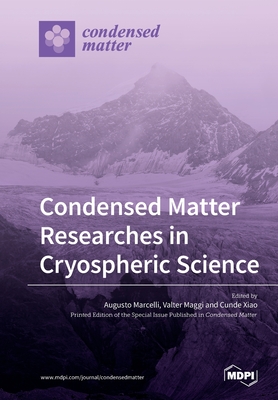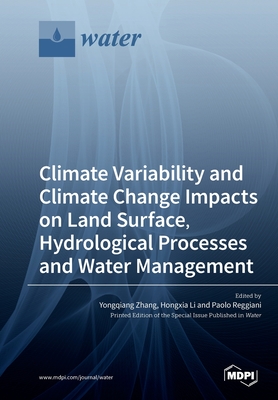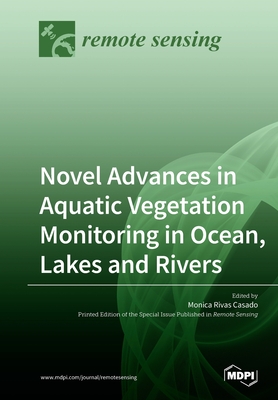Resource Recovery Economics
This critical volume addresses an important contemporary issue, how to determine themost cost-effective approach to solid waste disposal. Based on wide-ranging, practicalexperience, this time-saving work details a systems approach to feasibility studies, providingthe basis for accurate, efficient analysis.
Ecological Risk Assessment
The definitive reference in its field, Ecological Risk Assessment, Second Edition details the latest advances in science and practice. In the fourteen years since the publication of the best-selling first edition, ecological risk assessment (ERA) has moved from the margins into the spotlight. It is now commonly applied to the regulation of chemicals, the remediation of contaminated sites, the monitoring of importation of exotic organisms, the management of watersheds, and other environmental management issues. Delineating the processes for performing an ERA, the book begins by defining the field, then goes on to describe its relationship to other environmental assessment practices and its organizational framework. The book also includes a chapter on ecological epidemiology, which has previously been treated as a type of ERA, but is now recognized as a distinct practice in itself. It explores important concepts in the ERA process including probability, uncertainty, scale, mode of action and multiple causes. Reflecting changes in the field, the book's scope has been broadened to include discussions of the application of ERA to agents other than chemical contaminants. The multitude of illustrative figures provides a flavor for the diverse practice of ERA. The author has re-organized the material, presenting a unitary process of ERA that is applicable to various problems, scales, and mandates. He keeps the emphasis squarely on providing clear, scientifically sound, and unbiased technical advice on the risks from chemicals and chemical mixtures.
The Suburban Squeeze
This title is part of UC Press's Voices Revived program, which commemorates University of California Press's mission to seek out and cultivate the brightest minds and give them voice, reach, and impact. Drawing on a backlist dating to 1893, Voices Revived makes high-quality, peer-reviewed scholarship accessible once again using print-on-demand technology. This title was originally published in 1984.
Landscape Ecology
Landscape Ecology - a rapidly growing science - quantifies the ways ecosystems interact. It establishes links between activities in one region and repercussions in another. Landscape Ecology: A Top-Down Approach serves as a general introduction to this emerging area of study.In this book the authors take a "top down" approach. They believe that context is equally as important as content and that an isolated, dismembered landscape fragment loses biodiversity. In contrast, past and current ecosystem studies have not considered the consequences of outside influences.The authors argue that the most detailed mathematical models of biodiversity within a landscape do not suffice to predict the outcome of management practices if the contextual analysis reveals that human impacts outside the landscape contribute to a reserve's ultimate demise. The material presented in this book demonstrates that protecting disconnected vignettes of nature in isolated national parks and reserves, or saving so-called "hot spots" of biodiversity, does not work.The rapid convergence of themes in ecology supports the study of the ecology of landscapes. Advances in this field will come from studies in landscape effects and the mobile organisms whose top down effects create and maintain landscapes. Landscape Ecology: A Top Down Approach supplies the basics for this work.
Forests at the Wildland-Urban Interface
Forests at the wildland-urban interface are at increasing risk due to the impacts of urbanization. Conserving and managing these forestlands for continued ecological and social benefits is a critical and complex challenge facing natural resource managers, land-use planners, and policymakers. Forests at the Wildland-Urban Interface: Conservation and Management provides information, strategies, and tools to enhance natural resource management, planning, and policymaking at the wildland-urban interface. The text is arranged in five sections: forestland changes at the wildland-urban interface and why they are occurring; economic, policy, and land-use planning tools that can be used to manage growth; methods for communicating with and engaging the public; ecosystem management tools for sustaining the provision of ecological goods and services from interface forests; and ways in which various types of landowners are pursuing conservation and management of forests in the interface. By combining science and management, theory and practical problem solving, this book addresses a broad range of issues associated with the wildland-urban interface and provides possible solutions. Natural resource professionals and urban planners will find this a crucial resource for coordinating and implementing sound policy and practice.
Introduction to Hierarchical Bayesian Modeling for Ecological Data
Making statistical modeling and inference more accessible to ecologists and related scientists, Introduction to Hierarchical Bayesian Modeling for Ecological Data gives readers a flexible and effective framework to learn about complex ecological processes from various sources of data. It also helps readers get started on building their own statistical models. The text begins with simple models that progressively become more complex and realistic through explanatory covariates and intermediate hidden states variables. When fitting the models to data, the authors gradually present the concepts and techniques of the Bayesian paradigm from a practical point of view using real case studies. They emphasize how hierarchical Bayesian modeling supports multidimensional models involving complex interactions between parameters and latent variables. Data sets, exercises, and R and WinBUGS codes are available on the authors' website.This book shows how Bayesian statistical modeling provides an intuitive way to organize data, test ideas, investigate competing hypotheses, and assess degrees of confidence of predictions. It also illustrates how conditional reasoning can dismantle a complex reality into more understandable pieces. As conditional reasoning is intimately linked with Bayesian thinking, considering hierarchical models within the Bayesian setting offers a unified and coherent framework for modeling, estimation, and prediction.
Sustainable Development Goals and Sustainable Supply Chains in the Post-Global Economy
This book presents a collection of studies on current best practices for delivering sustainable development policies within supply chains. It critiques the limitations of existing business theory and practice on sustainable supply chain management, and discusses opportunities for new conceptual models for businesses to engage with Sustainable Development Goals (SDGs). It examines how businesses can work towards implementing Sustainable Development Goals in the contexts of entrepreneurial initiative, industry collaboration and regional development. SDGs renew the sustainable development agenda for global communities and ask businesses and organisations to reset their sustainable development policies. A strategy to embed sustainable development principles into business operations along the supply chain operations, which has been a conceptual and, in many instances, practitioner, business and industry achievement of the past decades, is not enough to shift the economic and social conditions of poor populations around the world. How would the global supply chains of the future look like? What social relations does it envisage? How will businesses and organisations engage with societies, environments and complex institutional contexts in emerging markets and developing countries, which are faced with issues of population growth, needed leaps in infrastructure provision, educational and health improvements, cultural and institutional shifts? The books challenges current approaches to sustainable supply chain practices guided by discussion on SDGs. It reviews implementation issues of existing sustainable development approaches, assesses the advancement of sustainable development strategies and examines the opportunities for global value chains to increase their positive social and environmental inputs in regions, communities and organisations. The book collects both conceptual and empirical studies set in a variety of business and organisationalcontexts, such as manufacturing, retail, procurement, cities and industrial parks. It contests the accepted axioms of sustainable practices in the global supply chains and proposes new models for organisations and production networks to engage with societies and address market and production effects on communities and institutions.
The A.B.C. of Garden Pests and Diseases
"The A.B.C. of Garden Pests and Diseases is vintage work dealing with characteristics and nature of some well-known enemies and ailments of the plants and vegetables. With wonderful black and white illustrations and handy tips on distinguishing between garden friends and foes, this volume constitutes a must-have for any keen gardener and is not to be missed by collectors of vintage literature of this ilk. Contents include: "The Pest and Disease Problem Explained", "Hygiene in the Garden", "Pests that Attack Plants Generally", "The Pests of Vegetables", "The Diseases of Vegetables", "The Pests of Flowers", "The Diseases of Flowers", "The Pests of Fruit", "The Diseases of Fruit", "The Pests of Glasshouse Crops", "The Pests and Diseases of Lawns and Ornamental Trees", etc. Many vintage books such as this are increasingly scarce and expensive. It is with this in mind that we are republishing this volume now in an affordable, modern, high-quality edition complete with a specially-commissioned new introduction on the history of gardening.
The Dawn of Astronomy - A Study of the Temple-Worship and Mythology of the Ancient Egyptians
This vintage work contains a fascinating investigation into Egyptian Astronomy. It contains an at-length discussion of the early astronomical views of the Egyptians, based upon a study of their temples and the mythology connected with their various cults. Written in clear language and profusely illustrated, this marvelous text will be of considerable value to those with an interest in ancient astronomy, and it makes for a great addition to collections of allied literature. The chapters of this book include: The Worship of the Sun and the Dawn, The First Glimpses of Egyptian Astronomy, The Astronomical Basis of the Egyptian Pantheon, The Two Horizons, The Yearly Path of the Sun-God, The Probable Hor-Shesu Worship, et cetera. This book was first published in 1894, and is being republished now complete with a new introduction on the subject.
Theophrastus of Eresus on Winds and on Weather Signs - Translated, with an Introduction and Notes and an Appendix on the Direction, Number and Nomencl
Originally published in 1894. This is a fascinating read for any historian, but also contains much information that is still useful and practical today. Illustrated throughout it is a comprehensive and informative look at the subject. Many of the earliest books, particularly those dating back to the 1900's and before, are now extremely scarce and increasingly expensive. We are republishing these classic works in affordable, high quality, modern editions, using the original text and artwork.
HeisszeitMit Vollgas in Die Klimakatastrophe - Und Wie Wir Auf Die Bremse Treten
Dass unser Umgang mit fossilen Brennstoffen zu einer Erwarmung des globalen Klimas fuhrt, ist seit Jahrzehnten bekannt. Doch anstatt endlich den Anstieg der weltweiten Temperatur zu begrenzen, steigern wir unseren Ausstoss von CO2 noch. Angesichts populistischer Regierungen, die den Klimawandel wider besseres Wissen leugnen, aber auch Bewegungen wie Fridays for Future, ergreift der prominente Klima- und Meeresforscher Mojib Latif noch einmal das Wort. Sein Credo: Die Physik lasst nicht mit sich verhandeln. Mit der Natur kann man keine Kompromisse schliessen. Und: Schnelles Handeln ist notig. Nuchtern und gut verstandlich prasentiert Latif die Fakten. Ein flammender Appell, diese Fakten endlich ernst zu nehmen. Mit einem Sonderkapitel zu den Auswirkungen der Corona-Krise auf unseren Umgang mit dem Klimawandel.
Verfahrenstechnische Untersuchungen Zur Recyclingf瓣higkeit Von Carbonbeton
Jan Kortmann untersucht in diesem Buch, ob der Gesundheitsschutz und die Recyclingf瓣higkeit potenzielle Markteintrittsbarrieren f羹r den Verbundbaustoff Carbonbeton darstellen. F羹r die Fragestellung, ob Carbonbeton wiederverwendet werden kann, wurden Recyclingverfahren analysiert und Verwertungsoptionen f羹r die anfallenden Materialfraktionen aufgezeigt. Zur Sicherstellung des Gesundheitsschutzes wurden Faseremissionen aus Ver- und Bearbeitung von Carbonbeton erhoben und das Gesundheitsgef瓣hrdungspotenzial beurteilt.
Assessment of the Fate of Surrogates for Enteric Pathogens Resulting from the Surcharging
In the last ten years (2009-2019), flooding caused the death of over 48,000 people, and affected over 697 million people globally. This is expected to increase as a result of climate change, population growth and urbanisation. Floods can cause infections due to the release of water-borne pathogens from surcharged combined sewers and other sources of faecal contamination on urban surfaces such as concrete, asphalt, gravel, pavement, playground rubber tiles and grass. Using laboratory experiments with faecal indicator bacteria Escherichia coli, and with Bacillus subtilis spores, and MS2 bacteriophages under controlled exposure to simulated sunlight, this research contributes towards a better understanding of the environmental parameters that affect the concentration of pathogens in contaminated shallow water bodies and on different urban surfaces. Also, several sampling methods are assessed for the recovery of bacteria from flood-prone urban surfaces. This study suggests that given the sunlight conditions after an urban flood, the concentration of indicator organisms and of total suspended solids and the surface type it is possible to estimate the fate of selected pathogens. The observations and results presented in this study contribute to the development of policy-making tools for rapid implementation of appropriate measures to mitigate public health risks after flooding. This book: - highlights the relation of urban floods with water-borne diseases.-stresses for the first time the importance of urban surfaces (pavement, concrete, asphalt, etc.) on the inactivation of water-borne pathogens.-provides equations that can be used to develop policy-making tools for implementation of appropriate measures to mitigate public health risks after flooding.
Pollution of Water Bodies in Latin America
Preface.- Historical findings on presence of pollutans in water bodies in Latin America and their ecotoxicological impact.- Toxicity produced by an industrial effluent from Mexico on the common carp (Cyprinus carpio).- Pesticide contamination in Southern Brazil.- Embryotoxicity and teratogenicity induced by naproxen in Xenopus laevis, species of ecological interest in Mexico.- Differential responses of biochemical and behavioral parameters in the native gastropod Chilina gibbosa exposed subchronically to environmental concentrations of two insecticides used in argentina.- Oxidative stress induced by water from a hospital effluent of the city of Toluca, Mexico on Hyalella azteca.- Evaluation of the toxicity of municipal effluents from a locality in the State of Mexico using Hyalella azteca as a bioindicator.- Analysis of heavy metals present on air through the toxicity analysis in water by the gas washer method, using the organism Daphnia magna.- Ecotoxicological Studies of Metal Pollution in Sea Turtles of Latin America.- Evaluation of the toxicity of an industrial effluent before and after a treatment with Sn-modified TiO2 under UV irradiation through oxidative stress biomarkers.- Effects of river pollution on its biota: results from twenty years studies in the Suqu穩a River Basin (C籀rdoba, Argentina).- Effects found and induced by the presence of metals in species of the economic and ecological importance of Mexican aquatic environments.- Environmental Pollution by Hydrocarbons in Colombia and its Impact on the Health of Aquatic Ecosystems.- Biomonitoring of diffuse contamination in the Subtropical Region of Brazil: Multibiomarker Assessment in neotropical freshwater fishes.- Genotoxicity biomarkers in fish erythrocytes and water quality parameters.- Health diagnosis of the fish Scomberomorus cavalla from Tecolutla, Ver. M矇xico.- Histopathological assessment of organisms in ecotoxicological studies from Mexico.- Histopathological analysis of the intestine from Mugil cephalus on environment reference sites.- Impacts caused by manganese in the aquatic environments of Brazil.- Genotoxic effect of amoxicillin on peripheral blood of common carp (Cyprinus carpio).- Final conclusions.- Index.
Manufactured Uncertainty
In this provocative work, Lorraine Code returns to the idea of "epistemic responsibility," as developed in her influential 1987 book of the same name, to confront the telling new challenges we now face to know the world with some sense of responsibility to other "knowers" and to the sustaining, nonhuman world. Manufactured Uncertainty focuses centrally on the environmental and cultural crises arising from postindustrial, man-made climate change, which have spawned new forms of passionately partisan social media that directly challenge all efforts to know with a sense of collective responsibility. How can we agree to act together, Code asks, even in the face of inevitable uncertainty, given the truly life-threatening stakes of today's social and political challenges? How can we engage responsibly with those who take every argument for an environmentally grounded epistemology as an unacceptable challenge to their assumed freedoms, comforts, and "rights?" Through searching critical dialogue with leading epistemologists, cultural theorists, and feminist scholars, this book poses a timely challenge to all thoughtful knowers who seek to articulate an expanded and deepened sense of epistemic responsibility--to a human society and a natural world embraced, together, in the most inclusive spirit.
Статистическо
Изменение климата происходит из-за резкого роста выбросов парниковых газов и углерода в атмосферу. Колебания переменных количества осадков и температуры происходят быстрыми темпами вследствие урбанизации, вызывающей изменение климата. Для того чтобы человечество знало о будущих событиях, связанных с выпадением осадков и температурой, необходимо сделать прогноз. Изменение климата негативно сказывается на окружающей среде во всем мире. Большая часть ледников исчезает, а животные мигрируют из-за воздействия изменения климата на окружающую среду. Ученые уже закрепили свое мнение о том, что глобальное изменение произойдет радикально из-за климатичес
Advances in Waste Processing Technology
This book highlights the latest research on waste processing technologies, particularly for domestic, agricultural, and petroleum based pollutants, intended to achieve waste valorisation. In addition, it discusses the important role of plastic recycling, as well as advanced waste processing techniques.
Impact of Climate Change on Road Transport Infrastructure in Lagos Metropolis, Nigeria
This study investigates the impact of climate change on road transport infrastructure in Lagos metropolis Nigeria. Thirty years (1985-2014) climatic data on temperature, rainfall and humidity were obtained from Nigeria Meteorological Agency (NIMET) Lagos to evaluate trends in climatic parameters in the metropolis. Nine years (2006-2014) road infrastructure maintenance records were collected from Lagos State Public Works Corporation (LSPWC) to examine the magnitude of road facility maintained. Data were also generated from the sixteen roads randomly selected within the metropolis to assess road conditions. Primary data were obtained from 0.01% (1,100) of the total population on whom structured questionnaires were administered using random sampling technique. Descriptive statistics was employed to analyse trend of climatic variables; residents' awareness of climate change as well as physical and operational impacts of climate change. Multinomial Logistic Regression (MLR) was used to examine relationship between socio-economic characteristics of residents and climate change awareness. Analysis of Variance (ANOVA) was used to examine intra-urban variations in road condition, while Multiple Regression analysis was used to examine relationship between climate change and road infrastructure.
Covid-19 How it made us feelLife in lockdown during the CoronaVirus pandemic
An eclectic anthology of life during lockdown of Covid-19 worldwide pandemic. Vastly different personalities, one same experience, many varied feelings but one same wish.Academics, scientists, retail workers, front line NHS staff, carers, patients, a housewife, an MBE guy all afraid of the pandemic. 12 authors coming together to form a memoir style piece each telling a collection of feelings, life experiences and thoughts during lockdown.
A Crowning SyndromeACrowning Syndromethat changed the world order
A crowning syndrome that changed the world order. Did it start at Wuhan and will it end only there? Or will it wipe away humans as part of the evolution theory?Indirectly it impacts businesses, politics and religions.What are our priorities now; economy, food or population? Or terrorism, wars, and the weapons in their hands?Should we not concentrate on Health Care, and stop manipulating Hopes?Or are we bent upon knocking at the doors of computer models and a vaccine as we fail to escape the doors of death?Mike Rana's book tries answering these questions in simple words and tells us how the new world order has changed and how should it hence be maintained.
Statystyczny spadek parametr籀w klimatycznych
Zmiany klimatyczne mają miejsce w związku z poważnym wzrostem emisji gaz籀w cieplarnianych i węgla do atmosfery. Wahania opad籀w i zmienne temperatury występują szybko w związku z urbanizacją powodującą zmiany klimatu. Aby ludzkośc wiedziala o przyszlych wydarzeniach związanych z opadami i temperaturą, należy dokonac prognozy. Zmiany klimatyczne wywierają niekorzystny wplyw na środowisko w skali globalnej. Większośc lodowc籀w zanika, a zwierzęta migrują z powodu wplywu zmian klimatycznych na środowisko. Naukowcy ustalili już sw籀j spos籀b myślenia, że zmiany globalne nastąpią drastycznie ze względu na zmiany klimatyczne i ekologiczne. Zmian Klimatu (IPCC), w sklad kt籀rego wchodzi ponad 1300 naukowc籀w ze Stan籀w Zjednoczonych i innych kraj籀w, przewiduje wzrost temperatury o 2,5 do 10 stopni Fahrenheita w ciągu następnego stulecia. Jeśli chodzi o IPCC, rozszerzenie warunk籀w zmiany klimatu na poszczeg籀lne regiony jest zmienne w czasie, a r籀żne systemy spoleczne i środowiskowe są w stanie lagodzic zmiany lub dostosowywac się do nich.
Downscaling statistico dei parametri climatici
Il cambiamento climatico avviene a causa della forte crescita dei gas serra e delle emissioni di carbonio nell'atmosfera. Le fluttuazioni delle precipitazioni e delle variabili di temperatura si stanno verificando rapidamente a causa dell'urbanizzazione che causa il cambiamento climatico. Affinch矇 l'umanit? conosca gli eventi futuri delle precipitazioni e della temperatura, 癡 necessario fare delle previsioni. L'ambiente 癡 influenzato negativamente dal cambiamento climatico a livello globale. La maggior parte dei ghiacciai stanno scomparendo e gli animali stanno migrando a causa degli effetti del cambiamento climatico sull'ambiente. Gli scienziati hanno gi? fissato il loro modo di pensare che il cambiamento globale si verificher? drasticamente a causa del clima e dei cambiamenti ecologici. Il Gruppo intergovernativo di esperti sul cambiamento climatico (IPCC), di cui fanno parte pi羅 di 1.300 scienziati degli Stati Uniti e di altri paesi, prevede un aumento della temperatura tra i 2,5 e i 10 gradi Fahrenheit nel prossimo secolo. Per quanto riguarda l'IPCC, l'estensione delle condizioni del cambiamento climatico sulle singole regioni varia nel tempo e con la capacit? dei diversi sistemi sociali e ambientali di mitigare o adattarsi al cambiamento.
Statistische verlaging van de klimatologische parameters
Klimaatverandering vindt plaats door een sterke groei van broeikasgassen en de uitstoot van koolstof in de atmosfeer. Schommelingen in de regenval en temperatuursverschillen doen zich snel voor als gevolg van de verstedelijking, waardoor het klimaat verandert. Om de mensheid te laten weten wat er in de toekomst met de regenval en de temperatuur zal gebeuren, moet er een voorspelling worden gedaan. Het milieu wordt wereldwijd negatief be簿nvloed door de klimaatverandering. De meeste gletsjers zijn aan het verdwijnen en dieren migreren vanwege de gevolgen van de klimaatverandering voor het milieu. Wetenschappers hebben hun manier van denken al vastgelegd dat de wereldwijde verandering drastisch zal worden veroorzaakt door het klimaat en de ecologische veranderingen. Het Intergovernmental Panel on Climate Change (IPCC), waarin meer dan 1.300 wetenschappers uit de Verenigde Staten en andere landen zitting hebben, voorspelt een temperatuurstijging van 2,5 tot 10 graden Fahrenheit in de komende eeuw. Wat het IPCC betreft, varieert de uitbreiding van de klimaatveranderingsomstandigheden in de afzonderlijke regio's in de loop van de tijd en met het vermogen van verschillende maatschappelijke en milieusystemen om veranderingen te verzachten of zich daaraan aan te passen.
Diminui癟瓊o Estat穩stica dos Par璽metros Clim獺ticos
A mudan癟a clim獺tica ocorre devido ao grave crescimento dos gases de efeito estufa e das emiss繭es de carbono na atmosfera. Flutua癟繭es nas vari獺veis de precipita癟瓊o e temperatura est瓊o ocorrendo rapidamente devido ? urbaniza癟瓊o que causa a mudan癟a clim獺tica. Para que a humanidade saiba sobre os eventos futuros de chuvas e temperatura, a previs瓊o deve ser feita. O meio ambiente 矇 afetado adversamente pelas mudan癟as clim獺ticas a n穩vel global. A maioria das geleiras est獺 desaparecendo e os animais est瓊o migrando por causa dos efeitos da mudan癟a clim獺tica sobre o meio ambiente. Os cientistas j獺 fixaram sua maneira de pensar que a mudan癟a global ocorrer獺 drasticamente devido ?s mudan癟as clim獺ticas e ecol籀gicas. O Painel Intergovernamental sobre Mudan癟as Clim獺ticas (IPCC), que inclui mais de 1.300 cientistas dos Estados Unidos e outros pa穩ses, prev礙 um aumento da temperatura de 2,5 a 10 graus Fahrenheit ao longo do pr籀ximo s矇culo. Em rela癟瓊o ao IPCC, a extens瓊o das condi癟繭es de mudan癟a clim獺tica em regi繭es individuais varia com o tempo e com a capacidade dos diferentes sistemas sociais e ambientais de mitigar ou se adaptar ?s mudan癟as.
Oceans of the Future
A new series of science books for teens that explores the many ways in which global warming may change our daily weather, alter our long-term climate, and present new challenges to our way of life.Global warming is likely to alter ocean levels and temperatures. How will this affect worldwide weather patterns in future decades? Are we likely to see more violent weather, and how will oceans contribute to this trend?
Zukunftsf瓣higkeit gestalten; Untersuchung nachhaltiger Strukturen soziokultureller Zentren
F羹r 羹ber 600 soziokulturelle Zentren und Kulturinitiativen in Deutschland liegen kaum fundierte Handlungsans瓣tze f羹r eine nachhaltige Ausrichtung vor, weder auf Landes- noch auf Bundesebene. Zu fragen ist: Wie k繹nnen zukunftsweisende Wege der Kulturbetriebe gestaltet werden? Welche Kriterien sind heranzuziehen? Welche Beitr瓣ge zur Nachhaltigkeit sind wesentlich und leistbar? Die hier vorliegende qualitative Studie untersucht beispielhaft 13 soziokulturelle Zentren aus Hessen und Nordrhein-Westfalen unter Ber羹cksichtigung bundesweiter Erhebungen. Offenbart werden deutliche Desiderate und nicht genutzte Entwicklungspotentiale. Sie bietet erste Starthilfen, Wegweiser und Positionslichter, die f羹r eine strategische, zukunftsweisende Perspektive f繹rderlich sein k繹nnen - nicht nur f羹r soziokulturelle Zentren.
Science Snippets
Science Snippets is a compilation of brief, clear and simple columns published in a small town newspaper. They describe famed doctors and scientists, human senses, aging, various diseases, drugs and little known facts about many species, including their contributions to scientific research.. Max Sherman, the author, is a medical writer with years of experience and an unquenchable thirst for knowledge. Two of his previous books, Eclectic Science and From Alzheimer's to Zebrafish are available from the Regulatory Affairs Professional Society and Amazon. He is also the editor of the Medical Device Packaging Handbook and the Medical Device Validation Handbook and can be reached by email at maxsherman339@gmail.com.
The Amazon
The Amazon is a land of superlatives. The complex ecosystem covers an area about the size of the continental U.S. The Amazon River discharges 57 million gallons of water per second--in two hours, this would be enough to supply all of New York City's 7.5 million residents with water for a year. Its flora and fauna are abundant. Approximately one of every four flowering plant species on earth resides in the Amazon. A single Amazonian river may contain more fish species than all the rivers in Europe combined. It is home to the world's largest anteater, armadillo, freshwater turtle, and spider, as well as the largest rodent (which weighs over 200 lbs.), catfish (250 lbs.), and alligator (more than half a ton). The rainforest, which contains approximately 390 billion trees, plays a vital role in stabilizing the global climate by absorbing massive amounts of carbon dioxide--or releasing it into the atmosphere if the trees are destroyed. Severe droughts in both Brazil and Southeast Asia have been linked to Amazonian deforestation, as have changing rainfall patterns in the U.S., Europe, and China. The Amazon also serves as home to millions of people. Approximately seventy tribes of isolated and uncontacted people are concentrated in the western Amazon, completely dependent on the land and river. These isolated groups have been described as the most marginalized peoples in the western hemisphere, with no voice in the decisions made about their futures and the fate of their forests. In this addition to the What Everyone Needs to Know(R) series, ecologist and conservation expert, Mark J. Plotkin, who has spent 40 years studying Amazonia, its peoples, flora, and fauna. The Amazon offers an engaging overview of this irreplaceable ecosystem and the challenges it faces.
The Periodic Table of the Elements of Green and Sustainable ChemistryThePeriodic Table of
For over two decades, green chemistry and green engineering have been designing, discovering, inventing, and implementing new innovations that make our material world more sustainable. In order to move this science and technology to large scale with the urgency required to transform our society, the tools of sustainable chemistry will be needed. The Periodic Table of the Elements of Green and Sustainable Chemistry uses the metaphor of Mendeleev's 150 year-old framework to illustrate the varied and diverse approaches, conceptual constructs, tools, metrics, and policies that will be needed to move rapidly toward a sustainable civilization. Just as the original Periodic Table of the Elements has added many new elements, so it is true of this incarnation where new "elements" will be discovered along this important and necessary journey.
Arctic Plants of Svalbard
The Arctic is a special world. The Arctic Ocean is covered by white sea ice, and its margins are surrounded by bare terrestrial regions, known as tundra. Tundra is a cold and dry environment without trees, but even in the absence of trees, tundra plants such as dwarf shrubs, grasses, herbs and moss support the harsh environment by providing sustenance and shelter. This book introduces representative arctic plants and their function in Svalbard, revealing the unique tundra ecosystem, and discussing the direct and indirect effects of climate change in the Arctic.
Major Histocompatibility Complex (MHC) in Health and Disease
The major histocompatibility complex (MHC) is a highly polymorphic and diverse multigene locus in all jawed vertebrate species that has an integral role in adaptive/innate immune systems, transplantation, and infectious and autoimmune diseases. The MHC supra-locus in mammalian vertebrates is usually partitioned into three distinct regions, known as classes I, II, and III, which, to varying extents, can be found conserved in nonmammalian jawed vertebrates, such as bony fish, amphibians, and bird lineages. The MHC gene region is characterized particularly by the expression of class I and class II glycoproteins that bind peptides derived from intracellular or extracellular antigens to circulating T-cells. While this expressed antigenic specificity remains the predominant interest with respect to MHC function and polymorphism in a population, a broader concept has emerged that examines the MHC as a multifunctional polymorphic controller that facilitates and regulates genome diversity with a much greater array of functions and effects than just MHC-restricted antigen recognition. This volume of 19 reprints presented by various experts and collected from the Special Issue of Cells on "MHC in Health and Disease" covers a broad range of topics on the genomic diversity of the MHC regulatory system in various vertebrate species, including MHC class I, II, and III genes; innate and adaptive immunity; neurology; transplantation; haplotypes; infectious and autoimmune diseases; fecundity; conservation; allelic lineages; and evolution. Taken together, these articles demonstrate the immense complexity and diversity of the MHC structure and function within and between different vertebrate species.
Sipmo 2019
The biennial Congress of the Italian Society of Oral Pathology and Medicine (SIPMO) is an International meeting dedicated to the growing diagnostic challenges in the oral pathology and medicine field. The III International and XV National edition will be a chance to discuss clinical conditions which are unusual, rare, or difficult to define. Many consolidated national and international research groups will be involved in the debate and discussion through special guest lecturers, academic dissertations, single clinical case presentations, posters, and degree thesis discussions. The SIPMO Congress took place from the 17th to the 19th of October 2019 in Bari (Italy), and the enclosed copy of Proceedings is a non-exhaustive collection of abstracts from the SIPMO 2019 contributions.
Lipopolysaccharides (LPSs)
The cytoplasm of Gram-negative bacteria is bound by three layers: an inner membrane, a layer of peptidoglycan, and an outer membrane. The outer membrane is an asymmetric lipidic bilayer, with phospholipids on its inner surface and lipopolysaccharides (LPSs) on the outside, with the latter being the major component of the outer leaflet and covering nearly three-quarters of the total outer cell surface. All LPSs possess the same general chemical architecture independently of bacterial activity (pathogenic, symbiotic, commensal), ecological niche (human, animal, soil, plant, water), or growth conditions. Endotoxins are large amphiphilic molecules consisting of a hydrophilic polysaccharide component and a covalently bound hydrophobic and highly conserved lipid component, termed lipid A (the endotoxin subunit). The polysaccharide component can be divided into two subdomains: the internal and conserved core region as well as the more external and highly variable O-specific chain, also referred to as the O-antigen due to its immunogenic properties. LPSs are endotoxins, one of the most potent class of activators of the mammalian immune system; they can be released from cell surfaces of bacteria during multiplication, lysis, and death. LPS can act through its biological center (lipid A component) on various cell types, of which macrophages and monocytes are the most important.
Early Life Nutrition and Future Health
Inequity starts before birth and is programmed in part by nutritional exposures. If these exposures occur around the time of conception, during pregnancy, and/or in infancy or childhood (all critical periods of development) they may alter a child's health trajectory and impact risk for impaired cognition and learning, and cardiometabolic, immune, and neuropsychiatric diseases and disorders. This Special Issue on "Early Life Nutrition and Future Health" has the following aims: 1) understand the origins of offspring health inequities from an early nutritional perspective; 2) uncover new insights into the environmental, biological, and social mechanisms that underpin these health outcomes in offspring; and 3) present novel targets and approaches to optimise health trajectories and prevent chronic diseases and disorders in later life and across generations. The research projects included herein highlight novel mechanistic, epidemiologic, and intervention studies that target key windows where nutrition has the greatest influence on future health (preconception, prenatal, and postnatal periods) and that explore vulnerable populations and animal models of early life nutritional programming.
Proton IX is Coming!
Proton IX is Coming is a book about a new form of alternative energy production on planet earth. This new alternative energy is called "protonic energy" and it is a man made marvel! Protonic energy is produced by utilizing the new science of protonics, which is man made constant movement or perpetual motion by a machine. And yes...the Holy Grail of perpetual motion has been cracked! The ability to produce unlimited energy and continuous perpetual movement by a mechanized device is here.The device which makes all of this possible is, of course, proton ix. Proton IX is totally green because it does not release any carbon emissions into the atmosphere and does not deplete the earth of any of its natural resources. Proton IX will practically reduce and eliminate a substantial amount of fossil fuel use and production worldwide. World domination by proton ix and other protonic devices will be a game changer for planet earth.Perpetuus Momentum Natus...it is from the Latin and it means "constant movement born"!The world is about to change for the better with proton-ix and protonics.Proton IX is Coming!Perpetuus Momentum Natus!Scarface is Here!
Sugarloaf
Listen for the calls of nesting ravens and warblers, watch the growth of wild geranium and black cohosh, and savor the first autumn blush in the tupelo trees. Revel, as did Frank Lloyd Wright, Benjamin Henry Latrobe, and Franklin Delano Roosevelt--among generations of other amateur naturalists--in the remarkable natural, historical, and geological treasures of Sugarloaf, the Maryland Piedmont's only mountain.A favored destination of nearly one-quarter million visitors each year, some 35 miles northwest of Washington, D.C., and 50 miles west of Baltimore, Sugarloaf is a National Natural Landmark and privately owned park that is open to the public year-round. In this natural history and guidebook, Melanie Choukas-Bradley presents a fascinating blend of local, natural, and historical detail that transports the reader simultaneously onto the slopes of today's mountain and into the region's past. Discover why prominent architects and real estate barons have found the land so compelling, why preservationists and botanists strive to protect the natural habitat of so many native species, and why families return again and again to hike, study flora and fauna, and picnic at Sugarloaf.Choukas-Bradley lists practical information on how and when you might best enjoy a visit to the trails, wildflowers, and seasonal variations of the land. Her text is beautifully complemented by Tina Thieme Brown's pen-and-ink illustrations.
Extracellular Matrix Remodeling
The extracellular matrix (ECM) is where cells live. It is composed of collagen and elastic fibers, glycosaminoglycans and proteoglycans, and several glycoproteins. In most tissues, fibril-forming collagen type I is the major constituent of ECM.The function of the ECM goes beyond providing mechanical support to cells and tissues. As cells are embedded into the ECM and interact with its components through their surface receptors, cell-ECM interaction plays a key role in influencing different cell activities, such as cell proliferation and migration. The ECM also sequesters and releases growth factors affecting important cellular pathways. Overall, the ECM strongly influences and affects cell behavior and tissue homeostasis.ECM is a highly dynamic structural network that continuously undergoes controlled remodeling mediated by matrix-degrading enzymes, the matrix metalloproteinases (MMPs), under normal conditions.Quantitative and qualitative deregulation of ECM remodeling and, especially, of collagen turnover, is responsible for the alteration of ECM composition and structure, associated with the development and progression of several pathological conditions, such as organ fibrosis (determined by the abnormal accumulation of ECM components) and tumor invasion.The understanding of the diverse biological roles and properties of the ECM components is pivotal to the development of new therapeutic tools for disease treatment.
The Last Ranch
In a book that is "must reading for those interested in the future of the american West" (Kirkus Reviews), Bingham shows how ranchers in Colorado's San Luis Valley-along with a Rhodesian expert, a Canadian billionaire, and a Hindu mathematician-coped with an unfolding environmental disaster: the rapid desertification of their land.
A Life of Its Own
Is water a natural resource, or is it a commodity, to be sold for industrial, residential, and agricultural use? In the arid American West, this question is crucial, because water-or lack of it-affects every aspect of life. Index.
Growth and Ecosystem Services of Urban Trees
Numerous studies indicate an accelerated growth of forest trees, induced by ongoing climate change. Similar trends were recently found for urban trees in major cities worldwide. Studies frequently report about substantial effects of climate change and the urban heat island effect (UHI) on plant growth. The combined effects of increasing temperatures, changing precipitation patterns, and extended growing season lengths, in addition to increasing nitrogen deposition and higher CO2 concentrations, can increase but also reduce plant growth. Closely related to this, the multiple functions and services provided by urban trees may be modified. Urban trees generate numerous ecosystem services, including carbon storage, mitigation of the heat island effect, reduction of rainwater runoff, pollutant filtering, recreation effects, shading, and cooling. The quantity of the ecosystem services is often closely associated with the species, structure, age, and size of the tree as well as with a tree's vitality. Therefore, greening cities, and particularly planting trees, seems to be an effective option to mitigate climate change and the UHI. The focus of this Special Issue is to underline the importance of trees as part of the urban green areas for major cities in all climate zones. Empirical as well as modeling studies of urban tree growth and their services and disservices in cities worldwide are included. Articles about the dynamics, structures, and functions of urban trees as well as the influence of climate and climate change on urban tree growth, urban species composition, carbon storage, and biodiversity are also discussed.
An Annotated Bibliography on Rural Transport
Rural transport in developing countries has received increasing attention in development policy, and research and field experience has generated a number of books, articles and documents from organizations working in a variety of locations throughout the developing world. The International Forum for Rural Transport and Development and the International Labour Organisation have collected and annotated details of well over 100 of these books and documents. Information is also given on where to acquire or gain access to much of this material, including some of the most interesting and significant work which exists in unpublished and inaccessible form. The present book brings together the abstracts of a selection of relevant documents on a number of transport-related areas, namely, infrastructure, intermediate means of transport, transport services, policy and institutional issues, financial and planning issues and gender issues.
Physiological Responses to Abiotic and Biotic Stress in Forest Trees
As sessile organisms, plants have to cope with a multitude of natural and anthropogenic forms of stress in their environment. Due to their longevity, this is of particular significance for trees. As a consequence, trees develop an orchestra of resilience and resistance mechanisms to biotic and abiotic stresses in order to support their growth and development in a constantly changing atmospheric and pedospheric environment. The objective of this Special Issue of Forests is to summarize state-of-art knowledge and report the current progress on the processes that determine the resilience and resistance of trees from different zonobiomes as well as all forms of biotic and abiotic stress from the molecular to the whole tree level.
Estado Ecol鏬ico Biodiversidad Y Medioambiente
Cuidar, respetar, proteger y preservar la integridad planetaria ha de ser el m獺s excelso deber y el m獺s elevado compromiso 矇tico-moral de nuestra generaci籀n constituy矇ndose en el m獺s sublime legado que ha de heredar la humanidad en los tiempos futuros. Se trata del proyecto ecol籀gico m獺s ambicioso que haya conocido la humanidad en su permanencia hist籀rica en el planeta tierra.
Condensed Matter Researches in Cryospheric Science
The cryosphere is very sensitive to climate change, and glaciers represent one of the most important archives of atmospheric composition and its variability. From the Himalaya to the European Alps, the longest mid-latitude mountain chain in the world, lie thousands of glaciers that have collected atmospheric compounds over the last millennia. China and Italy are located at the opposite terminals of this long mountain chain, comprising strategic positions for understanding climate evolution and providing important information for the modeling of future climates.The results presented are highlights of some of the most recent advances in cryospheric studies, especially on the topic of mineral dust and aerosols in the atmosphere. They evidence the complexity of the chemical-physical processes involving solid compounds occurring in glacier, snow, and permafrost environments, covering different aspects such as spatial and temporal trends, as well as the impact of mineral and nonmineral particles. Results also show that recent advances in measurement techniques and source apportionment may be powerful and sophisticated tools to provide novel, high-quality scientific information.
Climate Variability and Climate Change Impacts on Land Surface, Hydrological Processes and Water Management
During the last several decades, Earth織s climate has undergone significant changes due to anthropogenic global warming, and feedbacks to the water cycle. Therefore, persistent efforts are required to improve our understanding of hydrological processes and to engage in efficient water management strategies that explicitly consider changing environmental conditions. The twenty-four contributions in this book have broadly addressed topics across four major research areas: (1) Climate and land-use change impacts on hydrological processes, (2) hydrological trends and causality analysis faced in hydrology, (3) hydrological model simulations and predictions, and (4) reviews on water prices and climate extremes. The broad spectrum of international contributions to the Special Issue indicates that climate change impacts on water resources analysis attracts global attention. We hope that the collection of articles presented here can provide scientists, policymakers and stakeholders alike with insights that support sustainable decision-making in the face of climate change and increasingly scarce environmental resources.
Novel Advances in Aquatic Vegetation Monitoring in Ocean, Lakes and Rivers
In recent decades, there has been an increase in the development of strategies for water ecosystem mapping and monitoring. Overall, this is primarily due to legislative efforts to improve the quality of water bodies and oceans. Remote sensing has played a key role in the development of such approaches--from the use of drones for vegetation mapping to autonomous vessels for water quality monitoring. Within the specific context of vegetation characterization, the wide range of available observations--from satellite imagery to high-resolution drone aerial imagery--has enabled the development of monitoring and mapping strategies at multiple scales (e.g., micro- and mesoscales). This Special Issue, entitled "Novel Advances in Aquatic Vegetation Monitoring in Ocean, Lakes and Rivers", collates recent advances in remote sensing-based methods applied to ocean, river, and lake vegetation characterization, including seaweed, kelp, submerged and emergent vegetation, and floating-leaf and free-floating plants. A total of six manuscripts have been compiled in this Special Issue, ranging from area mapping substrates in riverine environments to the identification of macroalgae in marine environments. The work presented leverages current state-of-the-art methods for aquatic vegetation monitoring and will spark further research within this field.







